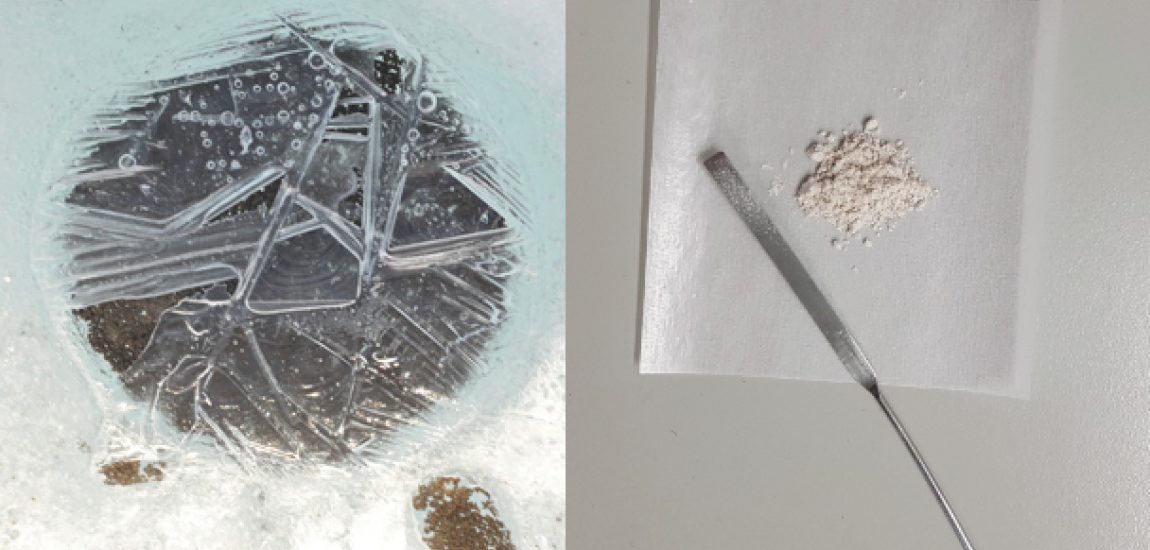
Repurposing everyday items for geochemistry
For the EAG Blogosphere’s new “Lab Corner”, the EAG want to know: What everyday item or household tool have you repurposed for science?
Read our first contributions below, and if you have any tips or tricks of your own that you’d like to share with the community, send them to us at the EAG Office!
Making it up with make-up
A few months ago we found ourselves in dire need of a standard material for referencing our solid-state nuclear magnetic spectroscopy data. In short, we need a mineral with defined magnesium–fluorine bonds, and it turned out that the perfect compound for this task was fluorphlogopite, a fluorine-endmember mica. However, the price from some well-known chemical companies was more than £1000 per gram. We then discovered, after a simple session on the internet, that fluorphlogopite is used in beauty products, such as skin foundation power, because it provides a supreme gloss (it’s a really shiny mineral). Fortuitously, some companies sell fluorphlogopite powder as a raw material with a price of roughly £2 for 25 grams. So far, this material is a wonderful standard compared with analytical-grade reference materials, and as a bonus, our hands look amazing after handling it.
Filippo Formoso, PhD student, University of St Andrews, UK
Culinary tricks in the cryosphere?
Many biologists who have prepared microscope slides for imaging will know that a little nail vanish is a cheap and effective sealant to preserve your specimen underneath the cover glass. However, perhaps few people outside of the relatively niche glacier microbiology community know the secret culinary trick to sampling a cryoconite hole (surface melt-holes on a glacier). Amongst the pipettes and crampons in our packs, you’ll often find a turkey baster – which turns out to be a very effective tool for extracting liquid and sediment from these small icy melt pools that are refugia for microorganisms.
James Bradley, Queen Mary University of London
